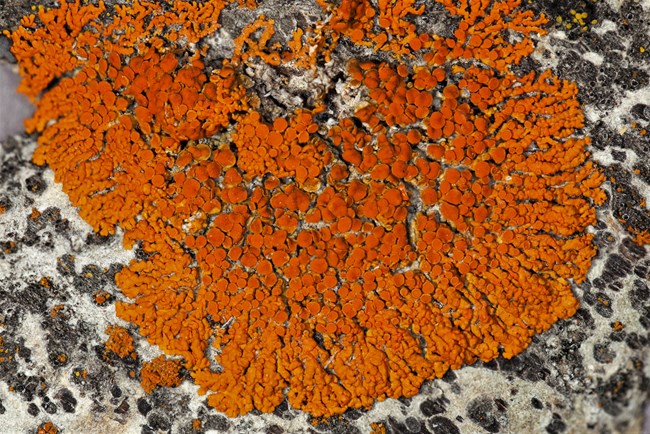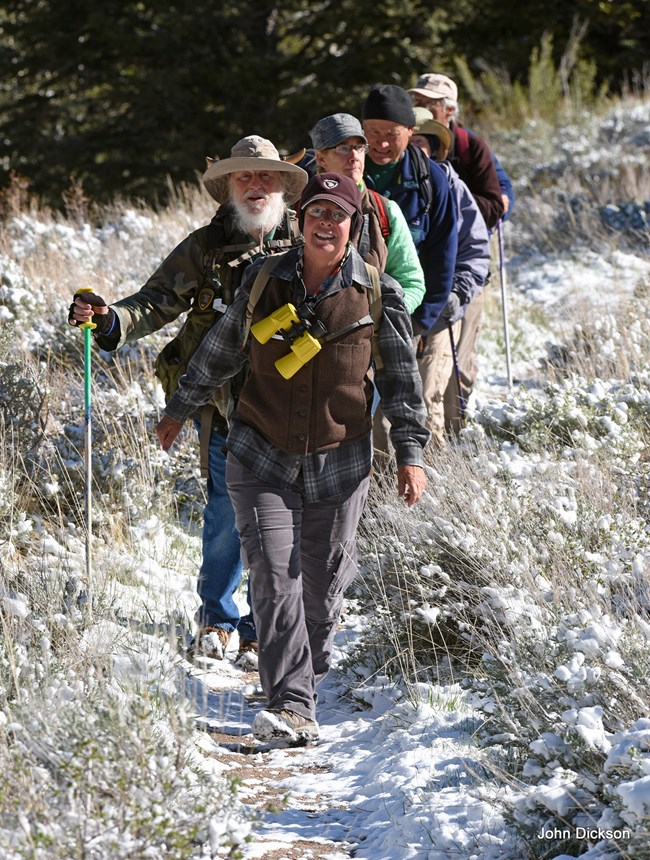Part of a series of articles titled The Midden - Great Basin National Park: Vol. 17, No. 1, Summer 2017.
Article
2017 Lichen BioBlitz
This article was originally published in The Midden – Great Basin National Park: Vol. 17, No. 1, Summer 2017.

Photo by Brad Kropp
What are lichens? They are an organism made up of fungi, algae, and sometimes bacteria. Lichens can grow on soil, trees, rocks, and more. They can live thousands of years. Some are very particular about air quality, and so only grow in the cleanest air. Disappearence of those species indicates problems not only for the lichens.

Photo by John Dickson
In 2015, the park funded a small base-line lichen survey by Dr. Brad Kropp from Utah State University. He set up 14 plots and spent a couple hours at each one. He found 123 lichen species in these plots. In addition, there are 37 lichen species from the Wheeler Peak list weren’t in those plots. That means that there are now 160 known lichen species in the park, and probably many more!
NPSpecies, the database that records what lives in each park, shows zero non-vascular plants in the park. Now we’re up to 160 species in just a few years. With this summer’s Bioblitz focusing on lichens, we’re expecting the list to grow even more.
Last updated: March 11, 2024
